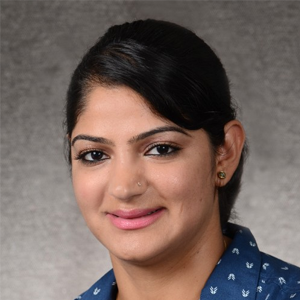‘What about all these other students?’
Carlota Ocampo really likes her job. In fact, she calls it “the greatest job in the universe.”
Ocampo is an associate professor of psychology at Trinity Washington University in the nation’s capital. She’s also the university’s provost and vice president of academic affairs.
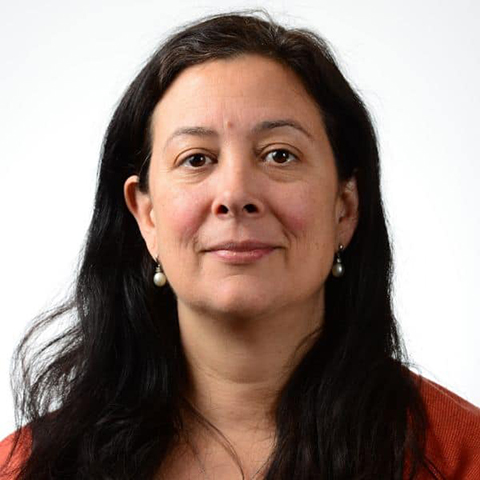
“It is such an exciting role because I have the opportunity to really influence how we do higher education in such a way that supports students to be successful,” Ocampo said.
Trinity is a private Catholic university. It was founded as a women’s college and continues that commitment to date through its College of Arts and Sciences, and it also is a predominantly Black- and Hispanic-serving institution.
Like a lot of the students she serves, Ocampo did not take a direct path to higher education.
“I didn’t even know what a provost was or have any idea what a neuropsychologist was. Just by taking the next step that was in front of me, I was able to come to this place. I feel like the luckiest person in the world,” she said.
Ocampo decided to give college a try when she was in her mid-20s.
“I always had a kind of deconstructive attitude toward my positionality in the world. We have words now like ‘intersectionality,’ but we didn’t have those when I was growing up,” Ocampo said. “As a Latina-identifying person, what were the expectations for me?”
She took a few random classes at the community college level and really liked it. When her professors praised her for her aptitude and critical thinking, she said, it was the first time she experienced that kind of recognition.
Ocampo patched together credits from a couple of different colleges to transfer to Howard University in Washington, D.C., where she “caught fire.”
“Howard, for me, was like being in a family. I felt safe and very connected to my professors. I felt like they cared about me. I felt like they nurtured my ideas and talents,” she said.
A psychology class focusing on the Black experience made her feel seen. She recalled thinking: “This is helping me make sense of my place in the world.” Her interest in psychology consolidated when she took a course called Brain and Behavior.
With a National Science Foundation grant in hand to study the neuroscience of depression, she went on to earn her doctorate in neuropsychology at Howard in 1997.
She then joined the faculty at Trinity, and she’s been there ever since. Today she ensures that academic programs meet accreditation standards and that students have positive learning outcomes.
Ocampo is also on the advisory board of The Steve Fund, an organization that supports mental health and emotional well-being of students of color.
She talked to ASBMB Today about her experiences nurturing students and about the deep-rooted connection between racial trauma and mental health. This interview has been edited for clarity and length.
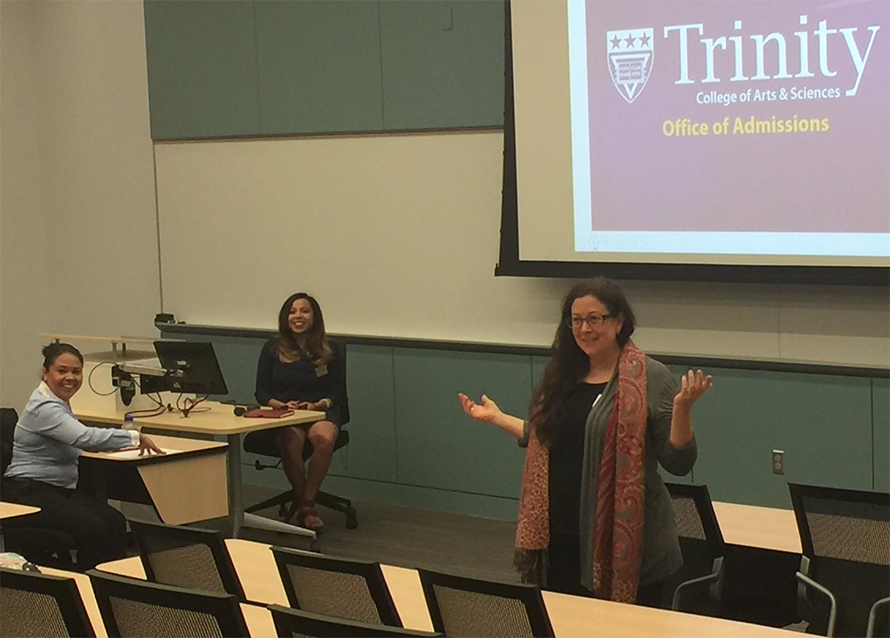
You’ve studied the psychology of trauma and oppression and its impacts on physical health. Tell me about that connection.
Studies of trauma emerged from the idea of shell shock or battle fatigue. People who are traumatized in war develop symptoms or defense mechanisms to those events. Over time, the field evolved to include things like sexual violence or domestic violence.
But there was never an inclusion or acknowledgment of the violence and oppression that’s inflicted on people of color in situations of hegemony or cultural supremacy. These include assaults on one’s ethnic self-identification and can vary from verbal or physical attacks to threats to livelihood. There was not a recognition that these incidents could be exponentially damaging.
So my research was proposing a model for examining the ways in which racist-incident–based violence parallels other kinds of violence, such as war trauma, sexual violence or family violence.
Now we can make the argument that racist-incident–based trauma should also be included as a category of recognition with the professional psychotherapy organizations. There can be no healing until racist-incident–based trauma is recognized, and mental health providers have a role to play in liberating oppressed people and communities.
This project is still very much under way. The understanding of complex trauma — wherein a variety of multiple traumatic events of an interpersonal nature intersect with each other and might have different after-effects — is constantly evolving and gaining recognition.
Trinity recently launched a racial equity program. Tell me about that.
In brief, Trinity DARE (Driving Actions for Racial Equity) is a five-pronged plan to address systemic inequalities and make sure that our students can access the same kinds of networks, experiences and education that privileged students have.
The first, and perhaps the most important, approach is widening career pipelines. It’s focused on finding experiential learning, internship, and externship opportunities for students. A lot of higher education internships — they’re sort of very closed networks. For instance, a corporation might have openings for a set of internships, but they always go back to the same two or three schools to draw their interns, because they have partnerships there. It’s a way in which we maintain the appearance of democracy in a highly stratified society, because we enable a few privileged students.
But what about all these other students?
So we’re now building networks that can lead to these applied learning and employment opportunities for all the students.
The second piece of the program is broadening access by increasing our intake of students of color who show great potential. It’s a great start, but you can’t just enroll students. You must support them. You have to change what’s happening on your campus to make sure that these students will get through.
Black women have the highest student debt load in the country. Reducing student debt by offering scholarships and financial aid packages improves the odds of them reaching the finish line and further supports long-term success.
The next step is using inclusive excellence practices. A few years ago, we obtained a huge grant from the Howard Hughes Medical Institute to examine the ways in which our science pathways were creating barriers to success or fostering the success of Black and Hispanic students. This is what laid the foundation of our inclusive excellence curriculum.
Students of color do not come into college with the same type of knowledge as students from predominantly white schools. I can tell you that, without making adjustments on campuses to accommodate the pedagogical needs of students who come from a variety of different backgrounds, you’re not going to be successful.
Some of that involves changing the way we scaffold learning outcomes and courses. Some of it involves changing the sequence of the courses. Some of it involves having mentor moments and official mentor networks. It involves a complete revision of the curriculum, of the pedagogies, of the teaching modalities, of the kinds of projects that we engage students in, and it resulted in a huge boom in our science programs.
The fourth platform that DARE resides on is engaging students in community research. We ensure that our students have the opportunity to research the impacts of racial inequity and participate in activities that can bring lasting change in the community.
As an example, in our chemistry department, we have research projects that focus on environmental justice, the fact that there’s unequal access to healthy environments. People of color are more likely to reside in neighborhoods with high local pollutants and lower air quality.
The last part of the program is self-examination. You can’t claim to be a social justice institution without doing some self-reflection and acknowledging your own history. Trinity is a Black and brown institution now, but back in the day, Trinity was a predominantly white institution.
What did that transformation look like? What was the experience of the pioneers? Those questions and others need to be answered. As a part of DARE, we recently completed a history project where we looked at what was it like to be one of the first few women of color who enrolled at Trinity, and we came up with an exhibit called “Faith in Women” that takes us through this journey of transformation.
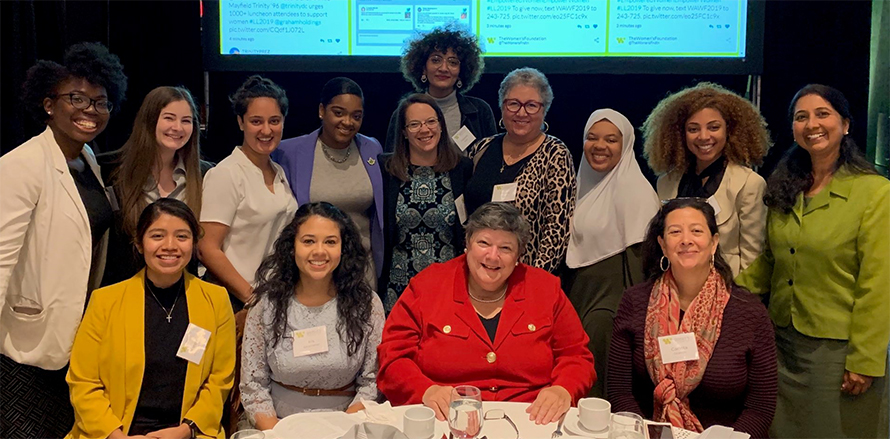
What advice do you have for administrators and professors at other universities?
As university administrators, we cannot just say that diversity is enrolling more diverse students. That doesn’t work. We must show outcomes.
There are many, many students who need higher education who might not look like the students who have always been on campuses. For institutions to thrive and maintain their accreditation, they need to enroll diverse students and improve their graduation rates. So it is also a good business decision to redesign one’s curriculum, support faculty networks, provide faculty training, and create opportunities to make sure that you can not only enroll students from different backgrounds but also foster excellence in the students.
You must have diversity, equity and inclusion infused throughout all your programs. You need to have mental health, wellness and programs that will support students from different backgrounds.
Most faculty are well meaning but are sometimes hesitant to have difficult conversations or to acknowledge a microaggression in class. There are a plethora of trainings that faculty can access that might help them examine their unconscious biases and gain a better understanding of what white privilege means. These might also help them develop empathy with themselves as well as students. They can also seek out training to learn more about what it means to be inclusive and to welcome all students into the room.
How do you encourage women from marginalized groups embarking on STEM career paths?
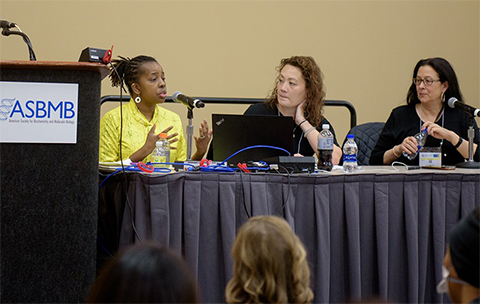
Don’t be discouraged, and don’t let anyone steal your joy. Know that you belong in this room and bring something essential to the room — without which our society can’t really move forward.
We know from biology that diversity is strength; it is also true socially. When we don’t see ourselves in these various spaces, we can internalize, “Do I really belong here?” We belong here more than anyone, because we bring the insight and a perspective that people need to hear, and that is currently missing.
The message that I particularly want to give to young women of color who are interested in science is to be armed with the research about the ways in which women are being stereotyped in these disciplines, so that when you are confronted with a microaggression or a macroaggression, you are able to understand what’s happening and respond in a way that’s both proactive and protective.
What keeps you going on this arduous path?
I truly believe in the power of education to promote democracy. And by “democracy,” I don’t mean a specific political system. I mean the ability for all citizens to contribute to a society and to have a good life. Education really allows people to deconstruct their intersectionality in the world and assess how they can contribute. So that’s what my job enables me to do.
I owe every debt for who I am today to Howard and to Trinity for taking me on, and my intention is that, when I die, my tombstone will read, “She helped thousands of women achieve a better way of life in the area of their strength.” That’s my goal.
What are you reading?
The last book I read is called “What My Bones Know” by Stephanie Foo. It’s about intergenerational trauma. She grew up in California and is a Malaysian-born American radio journalist, producer and author. And what’s interesting to me is that her story is authentic, moving and very gritty. She really addresses a lot of the issues around complex trauma in a way that is accessible.
And then I have a book called “Pregnant Girl: A Story of Teen Motherhood, College, and Creating a Better Future for Young Families” by Nicole Lynn Lewis. As we at Trinity do support a lot of mothers in college, the story of a young Black mother and founder of an organization, Generation Hope, that provides support for teen parents and their children is inspiring and insightful at the same time.
Finally, a collection of short stories called “A Manual for Cleaning Women” by Lucia Berlin. It’s about a woman growing up in in the American Southwest and exploring everyday lives of characters around her.
Enjoy reading ASBMB Today?
Become a member to receive the print edition four times a year and the digital edition monthly.
Learn moreFeatured jobs
from the ASBMB career center
Get the latest from ASBMB Today
Enter your email address, and we’ll send you a weekly email with recent articles, interviews and more.
Latest in Opinions
Opinions highlights or most popular articles

Debugging my code and teaching with ChatGPT
AI tools like ChatGPT have changed the way an assistant professor teaches and does research. But, he asserts that real growth still comes from struggle, and educators must help students use AI wisely — as scaffolds, not shortcuts.

AI in the lab: The power of smarter questions
An assistant professor discusses AI's evolution from a buzzword to a trusted research partner. It helps streamline reviews, troubleshoot code, save time and spark ideas, but its success relies on combining AI with expertise and critical thinking.

How AlphaFold transformed my classroom into a research lab
A high school science teacher reflects on how AI-integrated technologies help her students ponder realistic research questions with hands-on learning.

Writing with AI turns chaos into clarity
Associate professor shares how generative AI, used as a creative whiteboard, helps scientists refine ideas, structure complexity and sharpen clarity — transforming the messy process of discovery into compelling science writing.

Teaching AI to listen
A computational medicine graduate student reflects on building natural language processing tools that extract meaning from messy clinical notes — transforming how we identify genetic risk while redefining what it means to listen in science.

What’s in a diagnosis?
When Jessica Foglio’s son Ben was first diagnosed with cerebral palsy, the label didn’t feel right. Whole exome sequencing revealed a rare disorder called Salla disease. Now Jessica is building community and driving research for answers.

